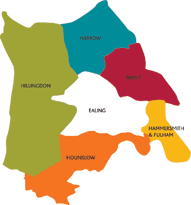-
>
-
>
-
Supplemental surveys
The most commonly required supplemental surveys are:
- All modes traffic count
- Automated traffic counts
- Car parking surveys
- Cycle parking surveys
All modes traffic count
All modes traffic counts are sometimes required by a planning condition. An all modes traffic count monitors all traffic movements (including car and non-car movements) generated by a residential development over a set period of time. For a residential site, an all modes traffic count provides the number and modal split for all journeys to and from a site.In London, all modes traffic counts are often required to be compliant with the TRAVL (Trip Rate Valid for London) database, which has been developed to serve as a reliable source of multi-modal trip-generation information for London. For a survey to be TRAVL compliant it must be carried out by a TRAVL-approved supplier. TRAVL should be contacted directly for more information on carrying out a TRAVL survey.
Automated traffic counts
Automated traffic counts monitor the number of vehicles passing a certain point over a set period of time. For a residential site, an automated traffic count provides the number of vehicle trips made to and from a site.
Counts are usually carried out by using Automatic Traffic Counters (ATCs). ATCs consist of tubes laid across a roadway, most often for a week at a time, recording 24 hours a day.
ATCs record the number, speed, vehicle type and time of trips. The types of vehicles counted ranges from motorbikes to 6-axle articulated lorries. Pedestrian and bicycle trips are not recorded by ATCs as they are not generally heavy enough. The output of an ATC is a Microsoft Excel spreadsheet detailing the number of trips per hour per vehicle type. Speed bands are also recorded on an hourly basis.
As specific equipment is required, a professional survey company should be contacted to arrange for surveys to be carried out.
Car parking surveys
Car parking surveys measure the occupancy levels of a car park over a set period of time. For a residential site, a car parking survey determines the level of car park occupancy and how this varies over a set time period.
Car parking surveys are carried out by counting the number of vehicles in a car park at set intervals, e.g. every hour. For residential sites, occupancy levels should be recorded both during the day and in the evening. The occupancy level is then calculated as the number of occupied spaces in relation to the number of available spaces.
Car parking surveys can be carried out by management company staff or a professional survey company.
Cycle parking surveys
Cycle parking surveys determine the number of bicycles in public areas of a site. For a residential site, a cycle parking survey determines the number of bicycles in relation to the availability of cycle parking.
Cycle parking surveys are carried out by counting the number of bicycles parked on a site at a certain time. For residential sites, counts should be carried out both during the date and in the evening. The survey should record the number of cycles parked at designated cycle parking locations as well as those chained to railings, posts, etc.
The occupancy level is then calculated as the number of bicycles parked on site in relation to the number of designated cycle parking spaces provided. Note: many popular cycle parking stands can accommodate two cycles, one on each side.
Cycle parking surveys can be carried out by a member of management company staff or a professional survey company, if desired.
-
-









